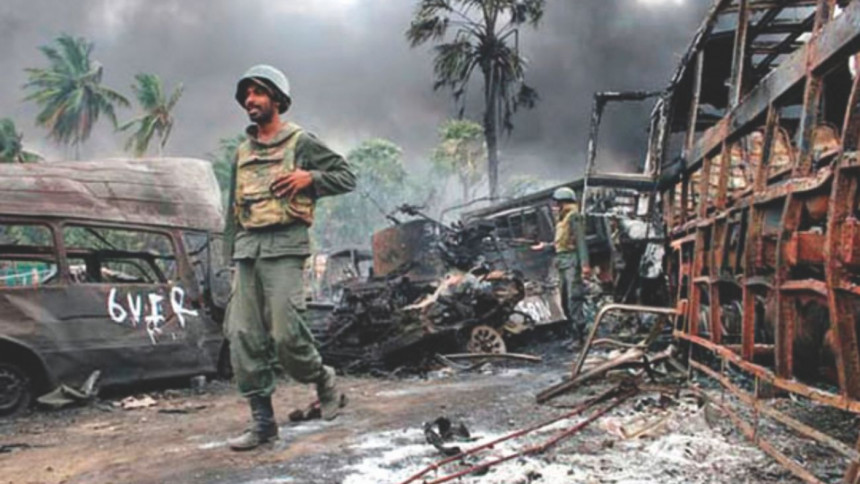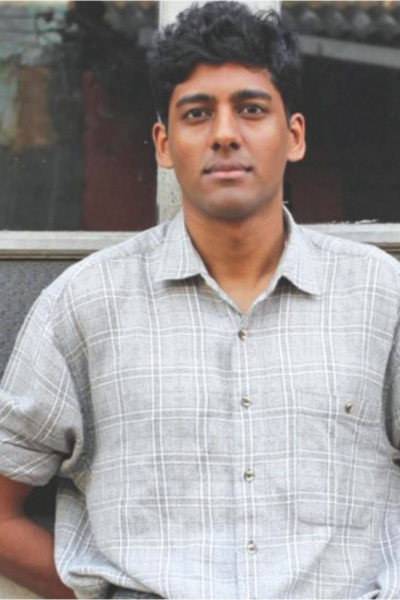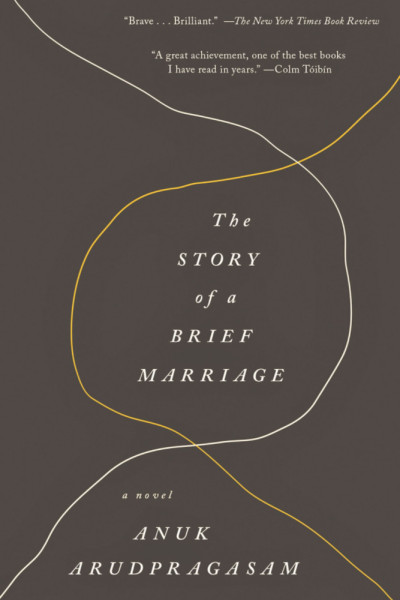War, in all its suffering


"Most children have two whole legs and two whole arms but this little six-year-old that Dinesh was carrying had already lost one leg, the right one from the lower thigh down, and was now about to lose his right arm." Anuk Arudpragasam's powerful debut novel "The Story of a Brief Marriage" starts with this haunting description of a shrapnel-struck child being brought to a makeshift clinic and about to undergo an unanesthetised amputation with a kitchen knife. It is set in the dying days of the bloody civil war in Sri Lanka, which lasted for 26 years and ended in 2009.
The book won the DSC Prize for South Asian Literature in 2017 which was announced in Dhaka Lit Fest in November last year. The writer, an unassuming young PhD student at Columbia University, competed with four other shortlisted writers including the bestselling writer of "The White Tiger", Aravind Adiga, and seasoned India-based writer Stephen Alter. Arudpragasam's win, as eminent feminist writer Ritu Menon on behalf of the jury said, was because: "The novel is impressive for its intensity and rich detail, and for exploring the tragic heart of war with such quiet eloquence. It is also a testament to the redemptive power of love, and to the human spirit's capacity for hope."
This rich detail runs throughout Arudpragasam's tale, which takes place over the course of a single day and night in a refugee camp in the north of the country. But this attention to detail does not extend to the exact setting or of the conflict in general, all we know is that the Tamil refugees in the camp are caught between both the Liberation Tigers of Tamil Eelam (LTTE) and the government forces.
Rather, it is an intimate look into the actions (and thoughts) of orphaned Dinesh, trying to avoid being conscripted and helping with the wounded and dead at the camp, that day and a sudden proposal of marriage he receives from a father to marry his daughter, Ganga, knowing that she would be taken care of in case he died. We do not even know Dinesh's last name, nor does Ganga before they get married. Against a backdrop of violence, they tentatively go through the motions of a new couple as best as they can in such an uncertain time. The author writes, "But if they couldn't talk about their pasts, what could they say to each other at all, given that there was no future for them to speak of either?"

The prose does not beautify or glorify war. Reading the book is a gripping, visceral experience. It draws parallels to the images and stories coming out of Syria over the past decade of the civilians caught in between, that too which is perhaps not coming out as prominently from the war in Yemen and the violence in Myanmar. We are bombarded with 24/7 news clips, bloody images and endless text written on the carnage of war, but it is quite different to have such a personal glimpse into the lives of those who have been displaced, orphaned, and otherwise shattered by war. The reader is reminded that while war goes down in history as facts and figures, for those in the moment it is their personal life and loss—the human and emotional cost—that matters.
The author had earlier written about his travels with a psychiatrist, Dr S Sivathas, working with survivors of the war in the north. Together, they had visited a village on the northeastern coast where Tamils displaced by the advancing army had been backed up and trapped for the last months of the war. Scarce food and water and the periodic shelling the area was subject to are reflected in scenes at the camp on the coast that Dinesh and Ganga shelter in. In real life, too, there was a makeshift clinic staffed by Tamil doctors and nurses who had stayed behind to help wounded civilians rather than fleeing for safety into government-held territory.
"When each and every individual in a place has been affected by trauma, it becomes part of the community itself, a normal, everyday phenomena." Arudpragasam's writing about the work of those helping survivors of war deal with their trauma is especially moving in light of his hard-hitting, very real portrayal of daily life under siege.
The ending of the book can very well be imagined. In an interview, Arudpragsam had stated:
"It's important that you know what's going to happen, because this all has to play out with a sense of inevitability… because that was the way I came into contact with [these events]. When I came into contact with this, it was already over. I knew how it was ending. I just saw all of these images, all of these videos of people in bunkers and people with dismembered bodies shouting and screaming, and it was clear that they would all die. So that sense of inevitability, that's part of why everything is given already. You know that this will end in this way. And you know if they survive, they won't really have survived."






Comments